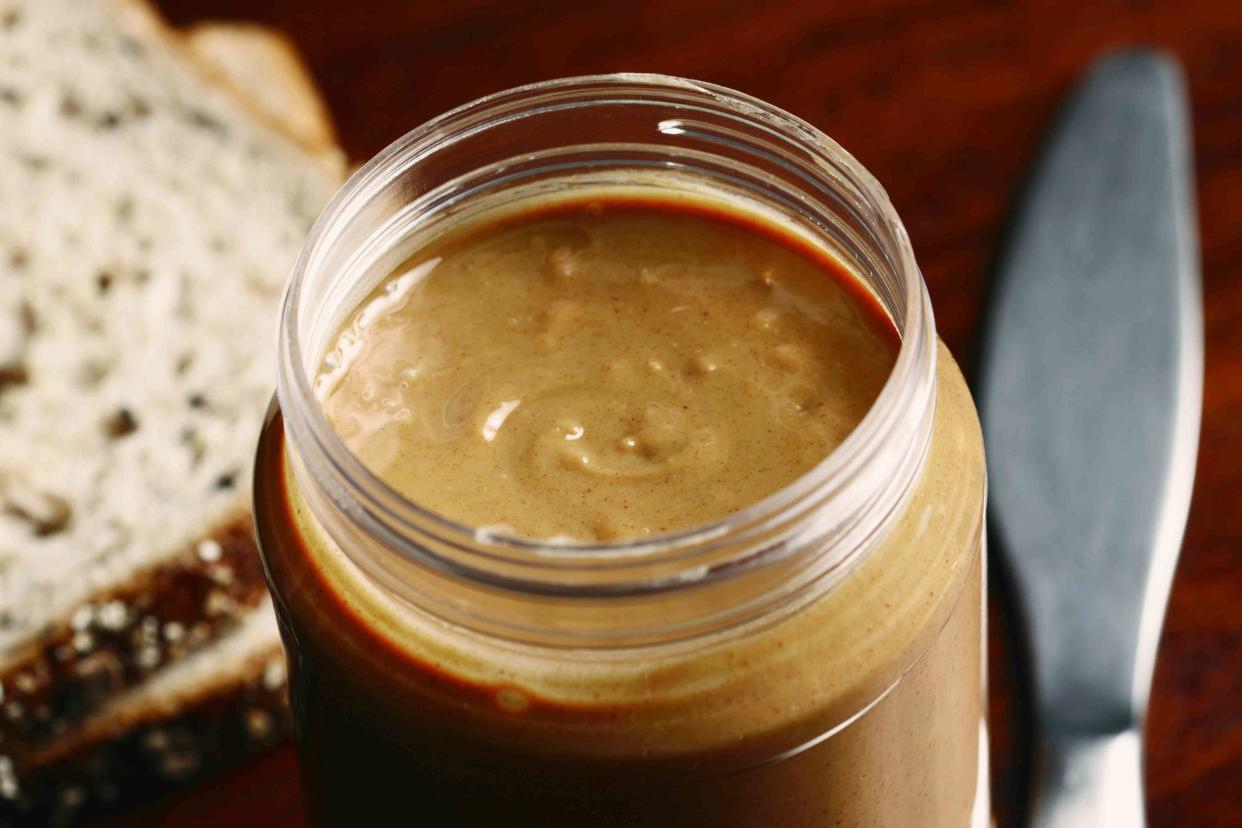Vitamin E Benefits and Sources

CaseyHillPhoto / Getty Images
Medically reviewed by Phoowanai Ektheerachaisakul, RDN, CDN, CNSC
Vitamin E comes in eight chemical forms, which you can get from food and supplements. Alpha-tocopherol is the most active form of vitamin E in the human body .
Nuts, seeds, and vegetable oils are the best food sources of vitamin E, but the most common way people get vitamin E is from soybean, canola, corn, and other vegetable oils. Additional food sources include wheat germ, peanuts, or peanut butter.
This article explains vitamin E benefits, dietary requirements, and vitamin E deficiencies.

CaseyHillPhoto / Getty Images
Benefits: Why Do We Need Vitamin E?
Vitamin E is one of four fat-soluble vitamins, and it is essential for your health. As an antioxidant, it protects and maintains cell membrane integrity. It fights against unstable molecules in cell division known as free radicals and against oxidative stress (an imbalance between free radicals and antioxidants in the body). The function of vitamin E may play an important role in fighting against cancer and other chronic diseases.
Other functions of vitamin E include:
Maintains cell immunity and strengthens the immune system
Promotes blood vessels integrity, preventing blood vessel leakage
Assists vitamin K for blood coagulation (to keep blood from clotting)
Vitamin E can absorb ultraviolet (UV) light energy and protect the skin from free radical damage when used to promote skin health. Some may find vitamin E as an ingredient in sunscreen.
How Much Vitamin E Is Needed Per Day?
As a fat-soluble nutrient, vitamin E is stored and absorbed in fatty tissues when ingested. The recommended dietary allowance (RDA) of vitamin E by age is as follows:
Birth–6 months: 4 milligrams (mg)
7–12 months: 5 mg
1–3 years: 6 mg
4–8 years: 7 mg
9–13 years: 11 mg
14 years and older: 15 mg
During lactation (breastfeeding): 19 mg
Because of the body's ability to store vitamin E, it does not need to be consumed daily.
Best Vitamin E Food Sources
Vitamin E is found in many foods, especially oils, nuts, and seeds. Foods high in vitamin E include:
Vegetable oils like wheat germ, sunflower, and safflower oils
Peanuts, peanut butter, almonds, and hazelnuts
Sunflower seeds
Vegetables, including broccoli, spinach, and tomatoes
Fruits, like kiwi and mangoes
Wheat germ oil contains a lot of vitamin E, at 20.3 mg per tablespoon.
Symptoms of Vitamin E Deficiency
Vitamin E deficiency is rare in healthy people but common in people who experience fat malabsorption that results in malnutrition. Signs indicating you are deficient in vitamin E include:
Retinopathy (damage to the eye's retina, impairing vision)
Peripheral neuropathy (damage to the nerves in the extremities, causing weakness or pain)
Myopathy (muscle weakness)
Ataxia (loss of body coordination)
Those most at risk of vitamin E deficiency are people with malabsorption syndromes, such as:
Vitamin E Supplements
Supplements made from natural sources will contain a form of vitamin E called RRR-alpha-tocopherol or labeled as d-alpha-tocopherol. RRR-alpha-tocopherol is the most bioavailable form of alpha-tocopherol in the body, meaning it enters the circulatory system quickly. Synthetic alpha-tocopherol contains all forms of vitamin E and therefore is less bioavailable than RRR-alpha-tocopherol.
Dietary supplements are not regulated the way drugs are in the United States. The Food and Drug Administration (FDA) does not approve them for safety and effectiveness before products are marketed. When possible, choose a supplement tested by a trusted third party, such as U.S. Pharmacopeia (USP), ConsumerLab.com, or NSF International.
That said, being third-party tested does not necessarily mean they are safe or effective in everyone. It's important to consult with a healthcare provider or a registered dietitian about any supplements you plan to take.
Most often, vitamin E does not interfere with medications. However, researchers have found that at high doses (more than 300 mg), it can lead to interactions with the following drugs:
Aspirin
Warfarin (blood thinner, such as Jantoven)
Tamoxifen (breast cancer medicine)
Cyclosporine (dry eye treatment)
Related:Tocopheryl Acetate: Everything You Need to Know
Link Between Vitamin E and Health Conditions
There is some evidence that vitamin E has a protective effect on some health conditions. However, most evidence is older and conflicting. More research on vitamin E's impact on certain conditions is needed.
Heart Disease
The evidence on the connection between vitamin E and heart disease is conflicting. An older study found that vitamin E supplementation may reduce the risk of venous thromboembolism (blood clots that form in a vein). However, other studies have found no differences in cardiovascular events between people who took the supplement and those who did not.
Cancer
While antioxidants are beneficial for reducing cancer risk by mediating the effect of free radicals, research has not explicitly supported vitamin E for cancer prevention. An older randomized controlled trial found that vitamin E supplementation did not prevent cancer in participants with vascular disease and diabetes.
However, another study on the effect of vitamins C and E on mortality (death) from bladder cancer found an association between vitamin E supplements, when used for 10 or more years, and reduced bladder cancer mortality. Taking the supplement for a shorter term had no effect.
Eye Disorders
The evidence supporting vitamin E's role in eye health is also inconclusive. In one randomized clinical trial, participants who took antioxidant supplements, including vitamin E, reduced their risk of developing advanced age-related macular degeneration (AMD) by 25% compared to those who took a placebo. However, another study on vitamin E's influence on AMD showed no difference.
Cognitive Decline
Since free radicals may influence the development of cognitive disorders, some have speculated that vitamin E as an antioxidant could play a role in reducing the risk. However, research thus far has not supported this theory. A review of two studies found no evidence that vitamin E prevents or treats Alzheimer's disease or mild cognitive impairment.
Gynecologic Conditions
Some research indicates that vitamin E may help with certain gynecologic conditions, including endometriosis (when tissue similar to that of the uterus grows outside the uterus), dysmenorrhea (painful periods), and genital tract infections.
Summary
Vitamin E is essential for cellular immunity and cell function, skin health, and developing blood cells. It is readily found in foods like oils, nuts, and seeds. As a fat-soluble vitamin, your body stores vitamin E in your fat cells for later use, meaning you don't need to consume it daily. Deficiency of this nutrient is rare in healthy people, but those with malabsorption conditions may be more susceptible to vitamin E deficiency.

